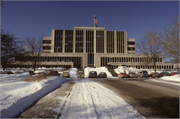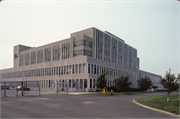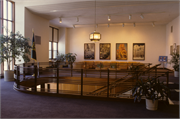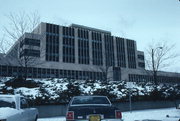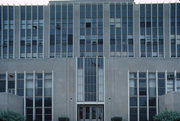| Additional Information: | The nationally noted Chicago architectural firm designed this laboratory in an industrial modern style to express its "clear-cut character in the practical application of scientific methods." Popularly known in America as the International Style, it was largely developed by European architects Walter Gropius and Le Corbusier (Charles Édouard Jeanneret), who sought to create a truly modern architecture that would eschew overt reference to historical designs and embody the new era of science, engineering, and rationality. This modernist movement embraced three basic principles: First, a building should be treated as a volume rather than a mass, with the thin smooth exterior skin of the building enveloping a skeleton of horizontal and vertical members. Second, the exterior should reflect the building's internal structure. And third, it should avoid applied decoration.
The six-story building rises in a series of five stepped setbacks. The first two stories have a pronounced horizontal emphasis, thanks to the long ribbons of windows and wall, reaching out from either side of the entrance like the wings of a biplane. The layered limestone piers flanking the entrance ripple outward to accentuate the effect. But then the building steps back to the third through fifth stories and assumes a much more vertical orientation. Here, windows are grouped into upright columns and banks, each bank separated from the next by limestone piers, which mask the structural columns, and metal uprights, concealed by cypress-wood fins. The wooden fins shade the windows during part of the day to reduce solar gain in summer. In the stepped-back blocks on either side of this upright section, ribbons of windows bend around the corners, characteristic of modernist design.
The Forest Products Laboratory, like the Forest Service itself, has its origins in the ideas of Gifford Pinchot, a major figure in natural-resource conservation. In the early twentieth century, Pinchot feared that the nation’s forests were being recklessly and wastefully depleted, and he believed that scientific experts like himself should manage the forests like an agricultural crop to guarantee the efficiency and long-term sustainability of timber production. As the Forest Service’s first chief, he sought out uses for wood byproducts, such as bark and sawdust, that had formerly gone to waste. In 1908, after a keen competition, the Forest Service selected the University of Wisconsin-Madison as the site for its new Forest Products Laboratory. The lab quickly outgrew its first facility at 1509 University Avenue, making necessary the construction of this new building in 1932. Here, researchers developed such new products as particle board, glued laminated wood, and the laminated arch, all important to the construction industries. They also contributed to the understanding of wood chemistry and genetics, pulp paper processes, and the design of fiberboard boxes and wood crates. |
|---|

